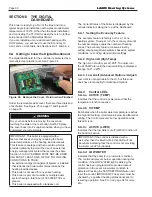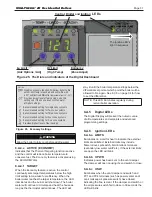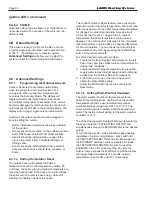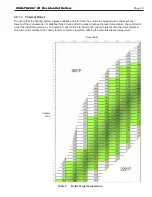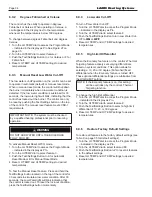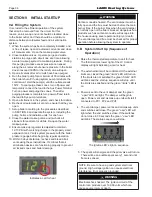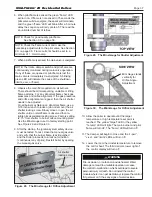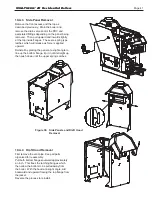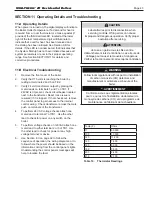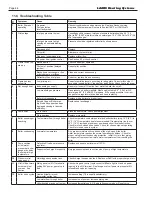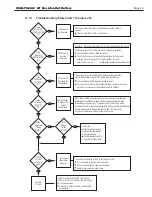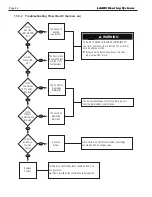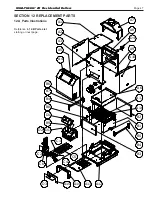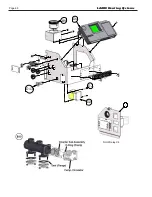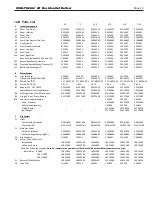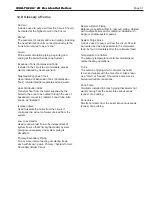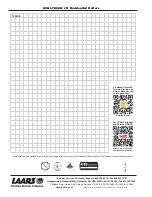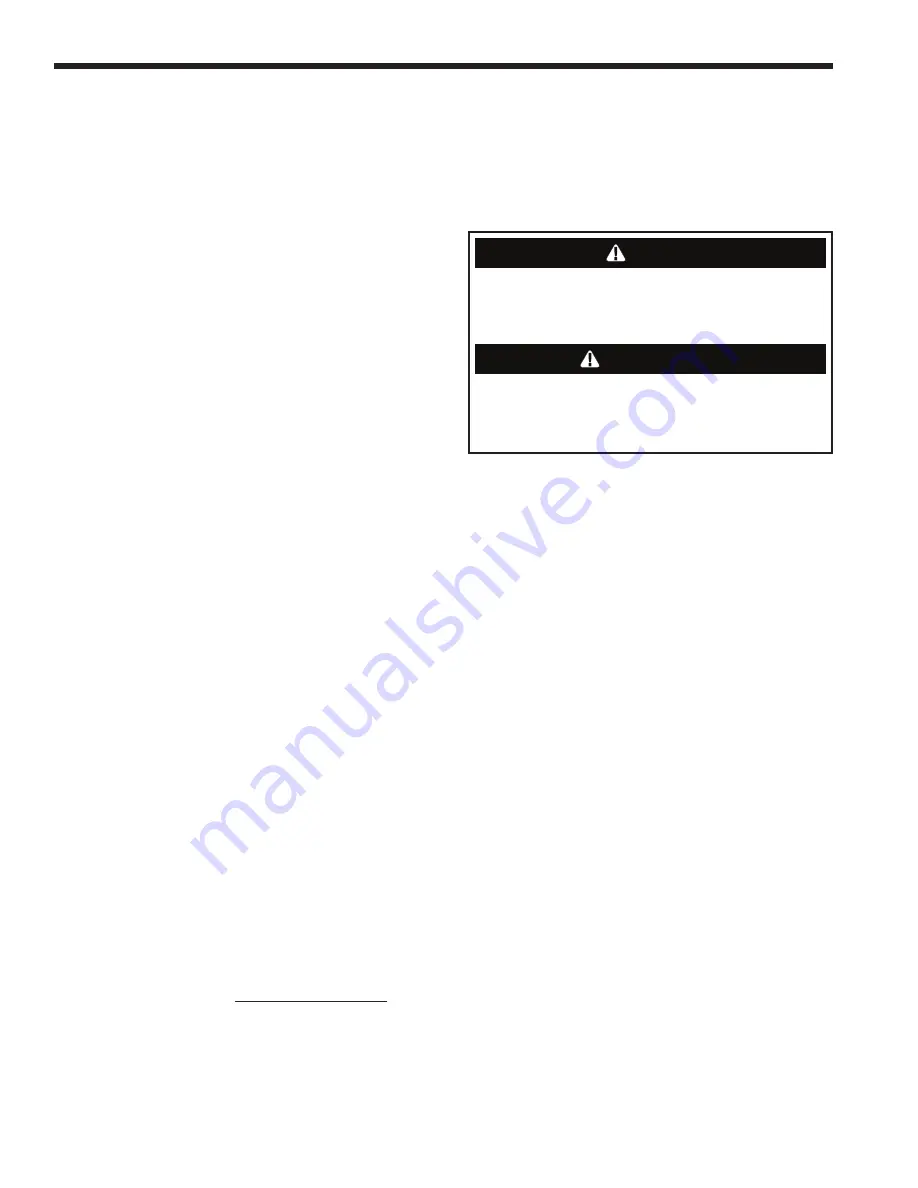
Page 42
is cleaned of exterior residue periodically based on
system conditions)
e. Mechanical flue damper operation.
f. Pressure Relief Valve.
WARNING
The Warranty does not cover damage caused by
lack of required maintenance, lack of water flow,
or improper operating practices.
AVERTISSEMENT
La garantie ne couvre pas les dommages causés
par l'absence d'entretien, absence de débit d'eau,
ou pratiques de fonctionnement irrégulières
11. Inspect the heat exchanger for fouling. Fouling
on the external surfaces of the heat exchanger is
caused by incomplete combustion, and is a sign of
venting and/or combustion air problems or too cold
of a return water temperature. The heat exchanger
can be inspected by using a flashlight and placing
a mirror under the burners. An alternate method is
to remove the top panel to inspect the exchanger
from above. The vent system should be inspected
at the same time. If cleaning is required:
a. Shut off all power to the boiler.
b. Remove the top, flue collector, and heat
exchanger baffles.
c. Remove the burners
d. Use a hand-operated spray bottle filled with
water, and a wire brush to clean soot and
loose scale from the underside of the heat
exchanger. DO NOT USE COMPRESSED
AIR, HIGH PRESSURE WATER, OR A
GARDEN HOSE.
e. Clean any fallen debris from the bottom of the
unit.
f. Check to make sure the burner ports and pilot
assembly are free of debris before returning
the burners to their original positions.
g. Reassemble the boiler in reverse order,
making sure to replace the heat exchanger
baffles and flue collector into the proper
location.
10.B Maintenance
1. Lubricate any motor bearings that are not sealed
bearings per the instructions.
2. If a strainer is employed in a pressure reducing valve
or the piping, clean it every six months or as needed.
3. At start-up, and periodically thereafter, the burner
and pilot flames should be observed. If the flame has
the appearance of “sooting” tips, check for debris
near the orifices. Clean any debris from orifice area
and remove burners to ensure they are debris free
inside and out. If this doesn’t clear the issue the heat
exchanger likely needs cleaning.
4. Ensure Vent Damper motors open and close by
watching the connecting rod between the stack and
the motor housing. The boiler should never start if
the damper is not in the open position. If it does, it is
critical to safe operation that this gets repaired.
5. Inspect the venting system for obstruction, leakage
or corrosion at least once a year.
6. Keep the boiler area clear and free from combustible
materials, gasoline, and other flammable vapors and
liquids.
7. Be sure that all combustion air and ventilation
openings are unobstructed.
8. This boiler has easy access through the top cover
and the flue collector for inspection of the heat
exchanger. Follow instructions in the following
sections to address cleaning out debris. It is critical
to ensure that the flue collector sits in the proper
position so that no flue products will escape into the
living area of the building.
9. If the boiler is not going to be used for long periods
of time in locations where freezing occurs, it should
be completely drained of all water. To accomplish
this, there is a drain valve on the right side of the
boiler which can be opened. This will drain the right
side of the boiler. There are two plugs located on
the left side of the heater which can be accessed
by removing the side panel which must be removed
to drain that side.
BOTH SIDES MUST BE
DRAINED.
See Section 9.E on page 40
10. The gas and electric controls on the boiler are
engineered for long life and dependable operation,
but the safety of the equipment depends on their
proper functioning. It is
strongly recommended that
these basic items listed be inspected by a qualified
service technician every year.
a. Water temperature controls.
b. Pilot safety system.
c. Automatic gas valves.
d. Low Water Cut Off (ensuring the Ectro-well
LAARS Heating Systems



